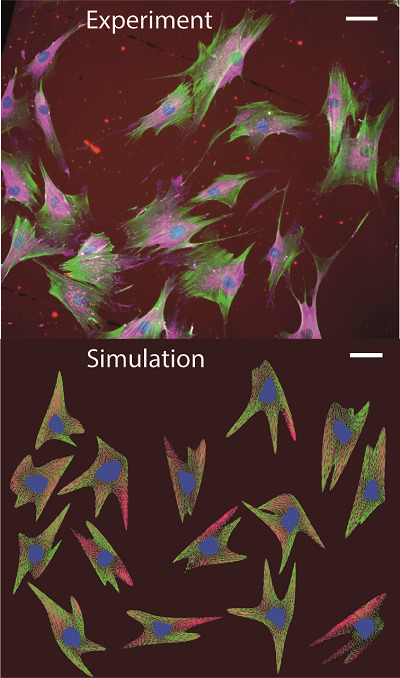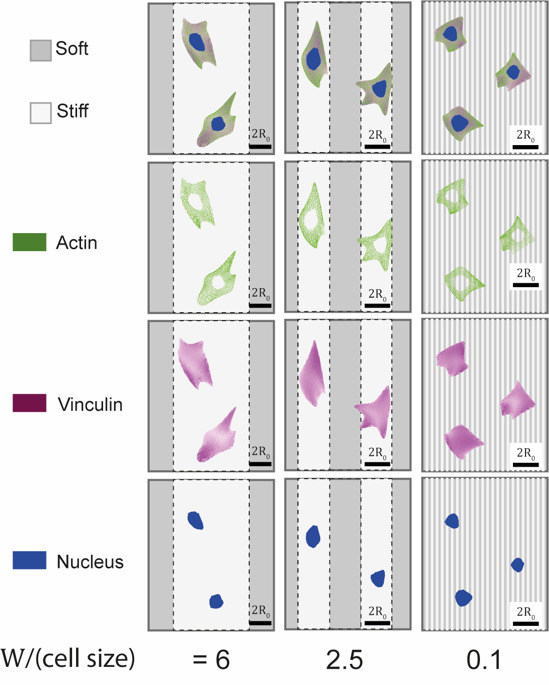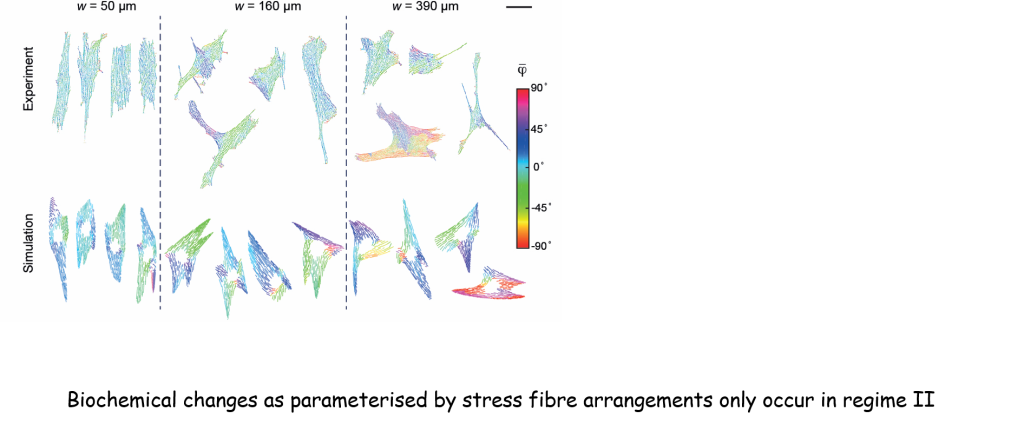Mechanobiology of cells and tissues
We have pioneered the development modelling frameworks for the mechano-sensitive response of eukaryotic cells with a focus on the role of the cytoskeleton and focal adhesions. A key insight was to develop an ensemble for the homeostatic equilibrium of cells even though from a conventional thermodynamics viewpoint, living cells are ultimate examples of non-equilibrium systems.
This has led to the development of a statistical mechanics framework for living cells, on par with conventional statistical thermodynamics, but yet accounting for the non-thermal fluctuations of cells and their subcellular components. The entropic forces associated with these non-thermal fluctuations help explain numerous non-intuitive phenomena including the alignment of cells in anisotropic environments and their mechano-sensitive spreading behaviour. Additionally, the framework has been expanded to include the dynamics of cell spreading, elongation, alignment and biochemical ordering in the context of geometrically anisotropic environments.

Immunofluorescence images captured from experiments and simulations


Immunofluorescence images from experiments and simulations of cells seeded on fibronectin stripes of different widths. These show the increased alignment of stress-fibres for decreasing fibronectin stripe widths.
Key Literature
S.S. Shishvan, A. Vigliotti and V.S. Deshpande, The homeostatic ensemble for cells, Biomechanics and modelling in mechanobiology. 17, 1631-1662
Resources
Videos
Tissue formed of collagen and cells. Cells are stained in green.
Time-lapse video of simulated fibroblasts changing shape and exploring fibronectin stripes of different widths.
Time-lapse video of a simulated single cell spreading and moving on a flat substrate